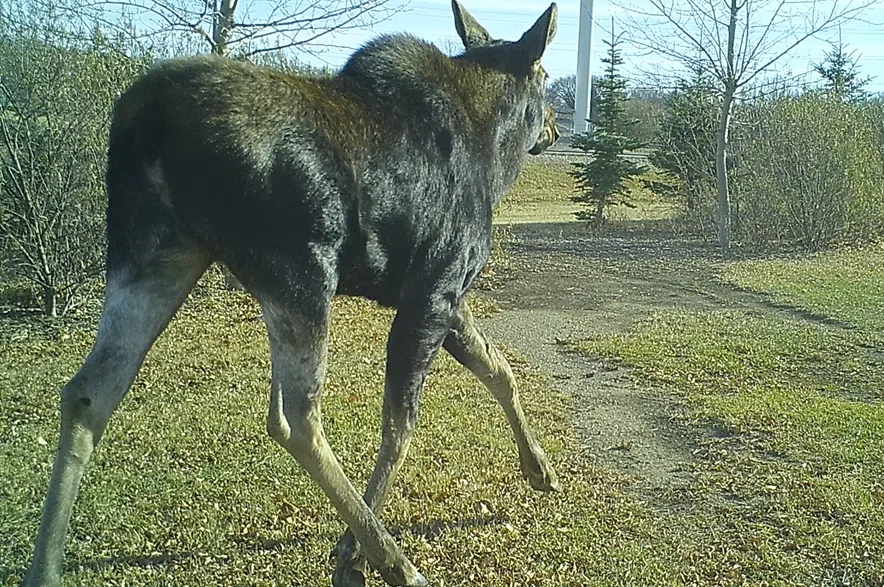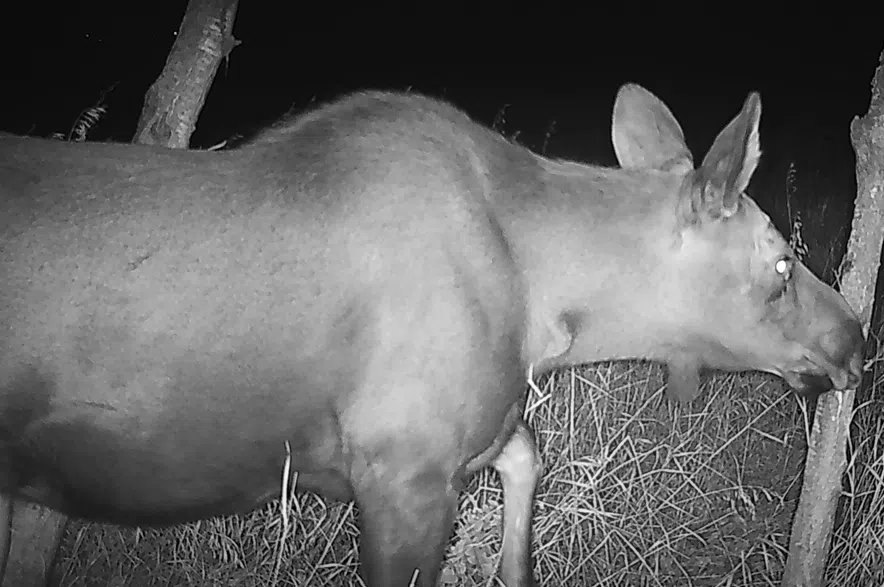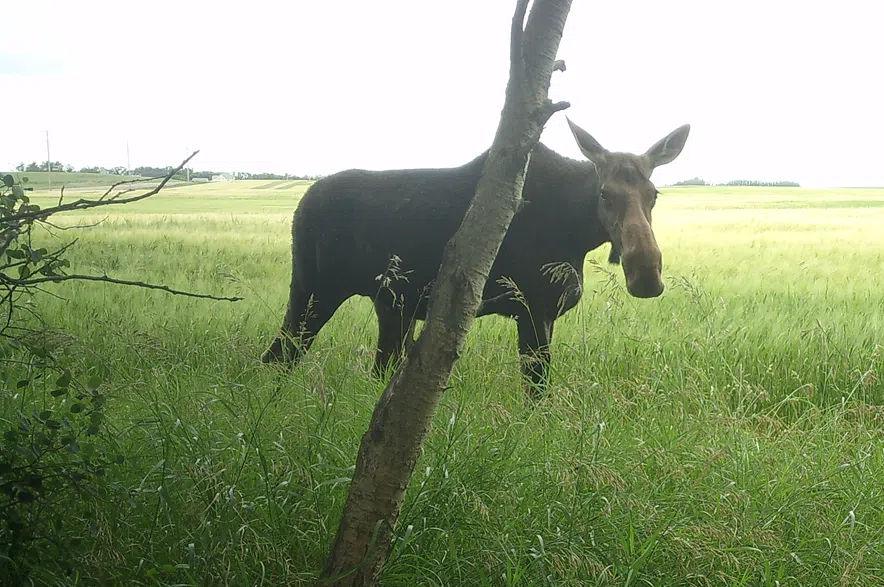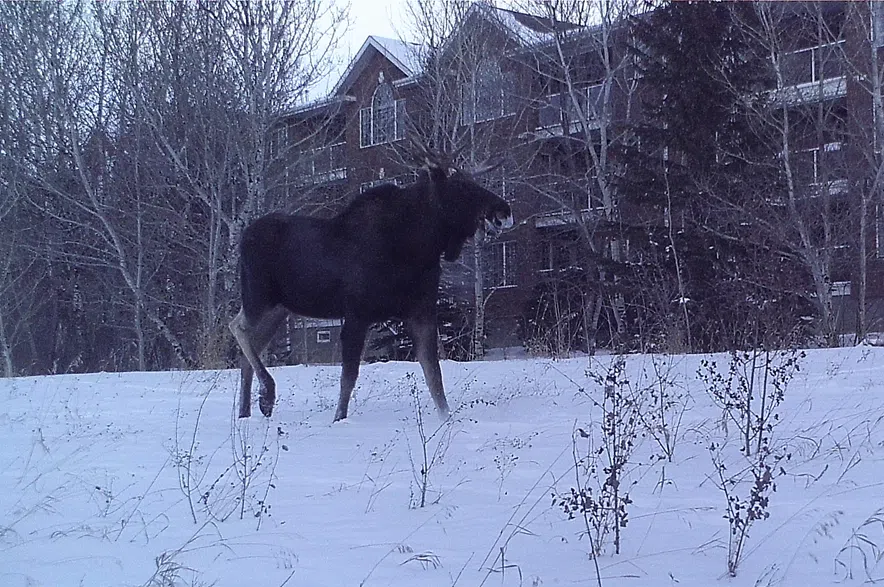Over the past three years, a network of 29 trail cameras set up in and around Saskatoon has captured 249 photos of moose, including females with calves, juvenile bulls and even large males.
“They’re not just passing through; we’re seeing moose reproducing inside the boundary of the City of Saskatoon,” said Dr. Ryan Brook, a professor and graduate chair in the university’s department of animal and poultry science.
Read More:
- VIDEO: Moose was on the loose in Saskatoon’s Stonebridge neighbourhood
- Moose wandering around Saskatoon rescued and relocated
- Saskatoon Police ask public to help identify man found in South Sask. River
Brook said the cameras, operated by his team and PhD student Katie Harris, revealed moose activity across 12 of the 29 sites, with sighting not just on the fringes but well within the city, including near train yards and in southeast neighbourhoods like Lakeview.
Listen to Ryan Brook on the Evan Bray Show:
Brook said he believes some moose follow major corridors like Highway 11 into the city, and the recent increase in sightings could be tied to young moose being pushed away by mothers after calving season.
“Those young ones, they’ve never done anything except follow mom around, and sure enough they wander into farmyards or (get) into the city,” he said.

Dr. Ryan Brook said the rise in sightings could be tied to young moose being pushed away by mothers after calving season. (Ryan Brook/Submitted)
The findings raise questions about how cities like Saskatoon can safely manage wildlife that wasn’t always considered a part of the urban environment.
Brook warned that moose are simply not compatible with city life, posing risks to both people and property.
“We had a neighbour in Lakeview… the moose got in the gate, and the gate closed behind it. It couldn’t get out, so it took down the west wall of the yard, and then the neighbours fence, too,” he said.

While moose sightings are increasing, they’re still considered occasional visitors, unlike coyotes, which Dr. Ryan Brook said are now well established in the city. (Ryan Brook/Submitted)
While moose sightings are increasing, they’re still considered occasional visitors, unlike coyotes, which Brook said are now well established in the city. His research team has collected years of coyote data through the same camera network, but he said there’s been little support or interest from municipal officials to act on the findings.
“A lot of decisions are being made right now about coyotes without any data in hand, and I have a real problem with that,” Brook said.
“We’re hoping someone wants to listen.”

Dr. Ryan Brook is sharing the team’s findings through a public Facebook page titled YXCWildlife, where residents can view photos from the trail cameras and the read study summaries. (Ryan Brook/Submitted)
The animal science professor said he believes education, signage and smart planning – like identifying high-risk zones and improving garbage management – could help reduce the potential for dangerous encounters.

A moose was spotted on Thursday, May 29 in Saskatoon’s Stonebridge neighbourhood. (Jackson Stevens/Submitted)
Brook is sharing the team’s findings through a public Facebook page titled YXCWildlife, where residents can view photos from the trail cameras and the read study summaries.
“We know what these hot spots are like,” he said, “and we have the data. Now it’s just a question of whether anyone wants to use it.”












